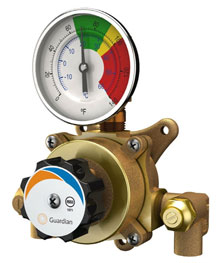 |
 |
| MSDS Topics |
Free Sites | FAQ's | Regulations | Glossary | Software | Suppliers |
| Books | Forum | Poll | Fun stuff | Quiz | Store | |
| MSDS and safety supplies | Search ALL our MSDS info | |||||
 | |||
 |
 |
 |
|
| Title: 03/04/2014 - OSHA's Amended Hazard Communication Standard (HCS 2012) about Hazards Not Otherwise Classified | |
| Record Type: Interpretation | Standard Number: 1910.1200 |
March 4, 2014
Erik C. Baptist
Counsel
American Petroleum Institute
1220 L Street, NW
Washington, DC 20005
Re: Request for Interpretation of OSHA's Amended Hazard Communication Standard (HCS 2012) about Hazards Not Otherwise Classified
Dear Mr. Baptist:
This letter is being issued to API to provide additional guidance on how to apply the requirements for Hazards Not Otherwise Classified (HNOC) under the March 26, 2012, revisions to OSHA's Hazard Communication Standard (HCS 2012).
Under OSHA's Hazard Communication Standard, an HNOC is defined as follows:
an adverse physical or health effect identified through evaluation of scientific evidence during the classification process that does not meet the specified criteria for the physical and health hazard classes addressed in this section. This does not extend coverage to adverse physical and health effects for which there is a hazard class addressed in this section, but the effect either falls below the cut-off value/concentration limit of the hazard class or is under a GHS hazard category that has not been adopted by OSHA (e.g., acute toxicity Category 5).
Classifiers may rely on the following guidance in applying the definition of an HNOC under HCS 2012 :

Thank you for your interest in occupational safety and health. We hope you find this information helpful. OSHA requirements are set by statute, standards, and regulations. Our interpretation letters explain these requirements and how they apply to particular circumstances, but they cannot create additional employer obligations. This letter constitutes OSHA's interpretation of the requirements discussed. Note that our enforcement guidance may be affected by changes to OSHA rules.
Sincerely,
David Michaels, Ph.D, MPH
cc: Lawrence P. Halprin, Esq.
Keller and Heckman LLP
Attorney for API
The official, public domain, OSHA version of this document is available at http://www.osha.gov/pls/oshaweb/owadisp.show_document?p_table=INTERPRETATIONS&p_id=28946&p_text_version=FALSE